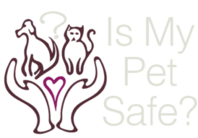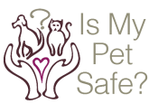Canine Influenza Virus H3N2 Vaccine
On 12/15/15, the NY Times ran an article about flu shots for dogs It is well worth the read and gives dog parents some good background on the latest H3N2 strain as does an earlier article on canine influenza by Steve Dale. Vaccines, however, have become a hot button issue in recent years so I felt I could help pet parets out by doing a little research on the subject.

In an effort to get some facts about the H3N2 vaccine, I reached out to both Zoetis and Merck Animal Health. Unfortunately, scheduling conflicts and the holiday season prevented Merck from replying. However, Zoetis was able to respond quickly to my inquiries.
Background
The first thing that dog parents need to know is that the H3N2 vaccine has been granted a conditional license. This piqued my interest - what exactly is a conditional license and what goes into getting government approval? I also wanted to know what is the efficacy of the vaccine, what are common side effects and are there any cautions for particular populations.
The United States Department of Agriculture Animal and Plant Health Inspection Service Veterinary Services Center for Veterinary Biologics (CVB) division is the federal group that oversees licensing of pet vaccines. CVB has their policy manual online and section 3.2 covers conditional licenses.
Per this policy, conditional licenses are granted for a finite time span, usually one year. To get the license, in addition to treating a new antigen, certain data must support the application:
- The firm must demonstrate that there is an urgent need in the field for such a product.
- The product must have a “reasonable expectation” of efficacy. This may be demonstrated by a limited-scale trial or other methods that have perceived clinical relevance … The data should come from use of the actual product and not another related product … The type and quantity of data required varies with the individual product
- The product must meet the same requirements for safety and purity as do fully licensed products
- Because efficacy is not fully established and potency must be linked to efficacy, a fully validated potency test is not required for conditionally licensed products. There should, however, be some type of testing to ensure batching consistency
- Because efficacy is not fully established, conditionally licensed products should not have label claims, such as “aids in the prevention of.” The claim should be similar to what we will use for single-tier labeling: For vaccination against <agent or disease>.
Certainly criteria #1 is met given the many outbreaks of canine influenza. Points #3 and #5 are encouraging and responsible. Unfortunately points #2 and #4 are a little bit fuzzy from where I stand, though the language does need to allow case by case flexibility.
Zoetis
I asked Zoetis whether clinical tests had been performed to test for efficacy and if any reports had been published yet: Their response touches on both points #2 and #4:
Zoetis has a ‘conditional license’ issued by the USDA. It indicates that a product fills a specific, immediate, medical need and has demonstrated a “reasonable expectation efficacy” and safety against the target pathogen. Additional efficacy and potency studies are in progress. [UPDATE: Zoetis followed-up with me and advises that in the lead up to conditional licensing testing is lab based.]
I also asked Zoetis about side effects of the vaccine and how they were determined (ie, by trials or based upon similar products like the approved H3N8 vaccine (a different strain).
We will collect pharmacovigilance data on this conditionally licensed vaccine over time. [Update: In a follow-up, Zoetis states in the pre-licensing phase their concern is with the 'potential side effects of vaccines in general.']
So in large part, the vaccinated dog population appear to be the test subjects that serve as the ultimate basis for verifying the safety of the vaccine and finding any potential side effects. This is not entirely surprising due to the need to make the vaccine widely available as quickly as possible.
However, Zoetis was able to give a few instances where dog parents probably should not vaccinate:
Safety has not been established in breeding, pregnant and lactating dogs. Safety has not been established in dogs less than 8 weeks of age.
Pet parents should be sure to inform which ever vet they go to for the vaccination of the medical history, if any, of their dog.
Finally, Zoetis stressed that to be effective, the vaccine must be administered in a precise way (more on this later):
Canine Influenza Vaccine, H3N2, Killed Virus* should be administered in two doses, three weeks apart, to healthy dogs eight weeks of age or older. Maximum immunity is expected approximately three weeks after administration of the second dose.
Zoetis has a website with additional information about their vaccine and the progress in licensing. Another Zoetis page has symptoms and other facts about canine influenza virus (CIV)
USDA
While Zoetis was helpful, I felt the need for a bit more clarification so sought out some assistance from the USDA. Joelle Hayden, the Public Affairs Specialist from the APHIS division was kind enough to reply:
On what defines an "expectation of efficacy,"
USDA defines an "expectation of efficacy" as sufficient data to provide an expectation that the product will be effective. The level of efficacy required is dependent on the antigen and disease situation. Generally, inactivated influenza vaccines are highly effective at preventing clinical disease.
I also wanted to know more about vaccine safety. Are conditional licenses granted without information on side effects? Is this data only gathered as a result of widespread use or are there required clinical trials before wide spread release to the general (dog) population?
No. Conditional licenses are granted based on a demonstration of purity, safety, and an expectation of efficacy. The purity and safety requirements for conditional licenses are consistent with what would be required for a fully licensed product. Pharmacovigilance data is gathered to assess product performance under field conditions.
This is consistent with the policy manual as quoted earlier and the Zoetis statement on gathering side effect information.
Finally, I wondered if USDA had collected any efficacy data on the earlier H3N8 vaccine:
USDA's role is to ensure the products have an expectation of efficacy when they are licensed. The older H3N8 vaccines were evaluated against homologous flu strains that were prevalent at the time of licensure and were highly effective against them.
We may be caught in a bit of lawyer speak here. The H3N8 vaccines were granted regular licenses at some point and it sounds like USDA is saying there was sufficient data provided as backup to prove efficacy.
Peer Review
So lacking a more specific answer on H3N8 efficacy, I checked to see if there have been any published studies. One that I found was an especially difficult trial. It looked at exposure to canine influenza and also Streptococcus equi subsp. zooepidemicus (a bacteria mostly causing the disease strangles in horses but known to sometimes cause pneumonia in dogs). The paper is freely available and was originally published in the journal Clinical and Vaccine Immunology in April 2011.
Here is the bottom line take away:
In the current study, the CIV (H3N8) vaccine significantly reduced the severity of clinical disease, viral shedding, bacterial shedding, and lung pathology in dogs infected with CIV and S. equi subsp. zooepidemicus. Hence, CIV vaccine could be used to aid in protecting dogs against CIV as well as against opportunistic bacterial pathogens, such as S. equi subsp. zooepidemicus.
In addition, the authors bring up an important item for dog parents to be aware of (mentioned earlier by Zoetis):
To achieve protection, it is important that dogs are vaccinated at least 3 weeks before exposure to CIV. This killed vaccine should be given in 2 doses no less than 2 weeks apart. Immunity can be expected approximately 7 days after the second dose.
So while dosing amounts and schedules may vary between manufacturers and the target (H3N8 or H3N2,) it is very important that your dog be vaccinated at least three weeks PRIOR to any anticipated exposure.
This means avoid the dog park or kennel for at least a month from the first shot. It may be a good idea to also avoid those high risk areas a week or so prior to vaccination to be sure your dog is not already exposed but check with your vet for their recommendation.
Conclusion:
Dog parents who believe their pet is in an at risk population for canine influenze virus should definitely consider the H3N2 and H3N8 vaccines. While it is always good to be cautious with new medications, it does appear that the H3N2 vaccine is safe and effective.
Your vet can advise which strain is most likely to be seen in your area and if there are contraindications should your pet suffer from some other pre-existing illness. The vaccine itself is reasonably priced; hopefully your vet will not charge an unduly high fee to administer the two required doses. Perhaps one day pet parents will be able to take their dog to Costco, CVS or some similar pharmacy for vaccination just like humans do.
I would like to thank both Zoetis and the USDA APHIS division for their assistance with this article.


